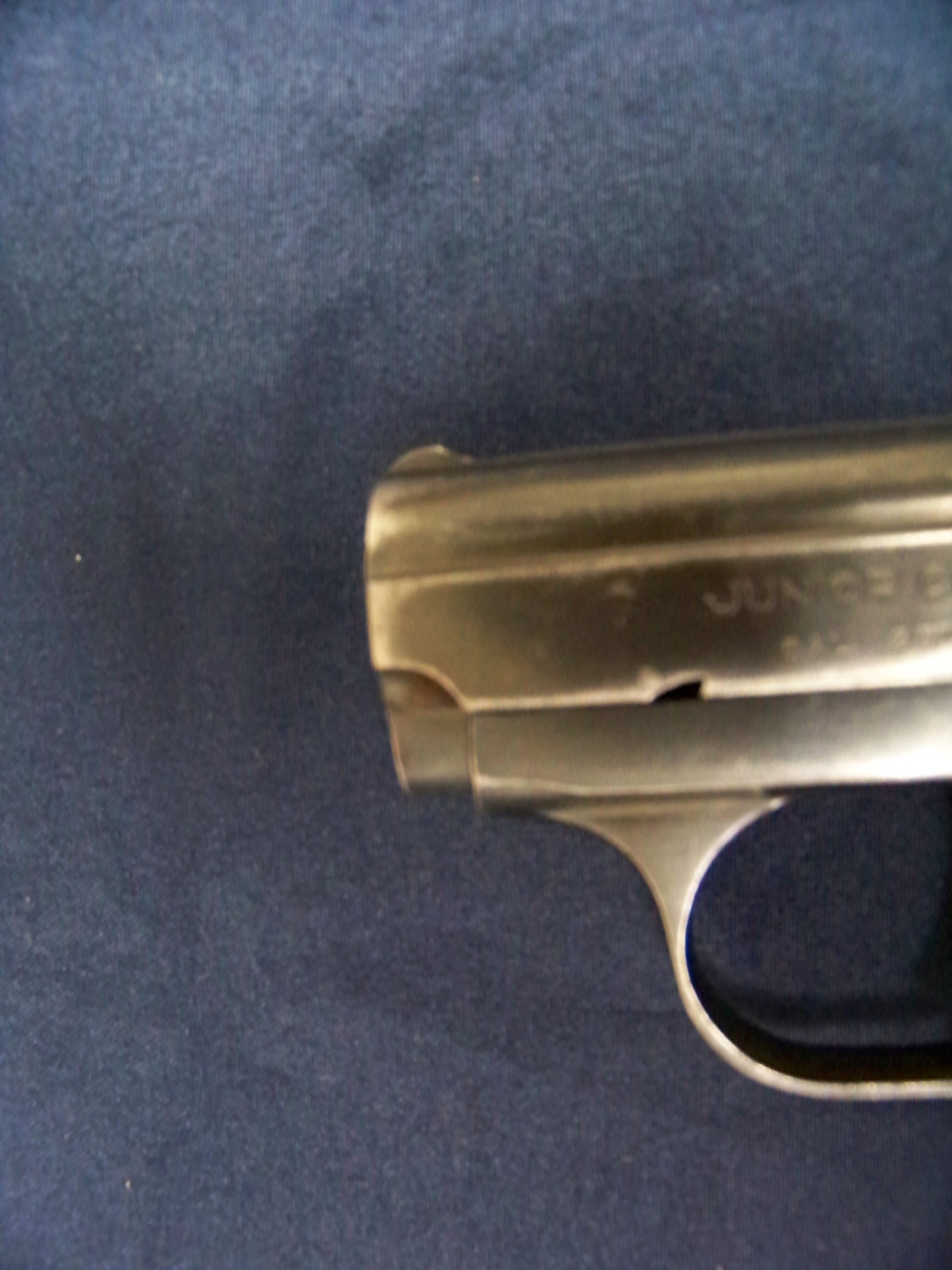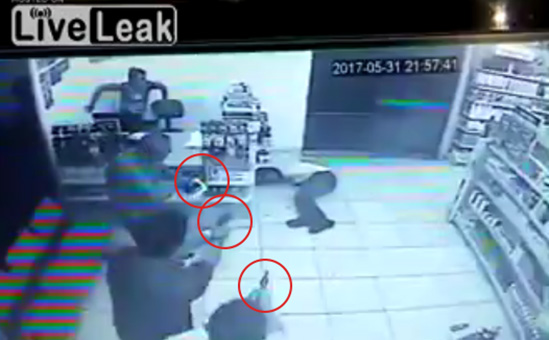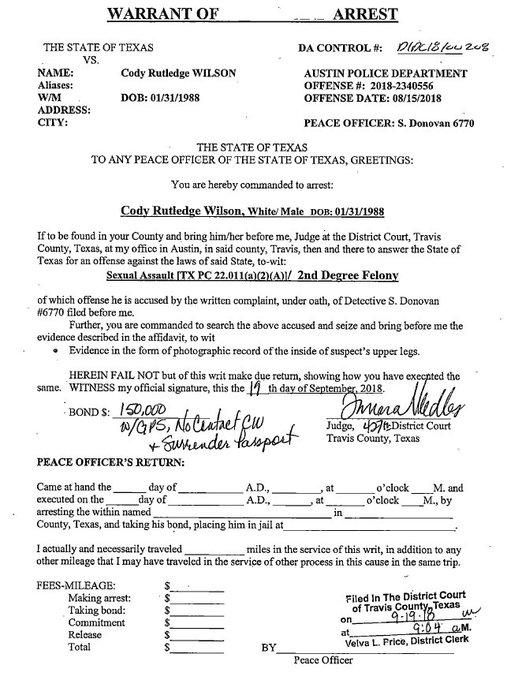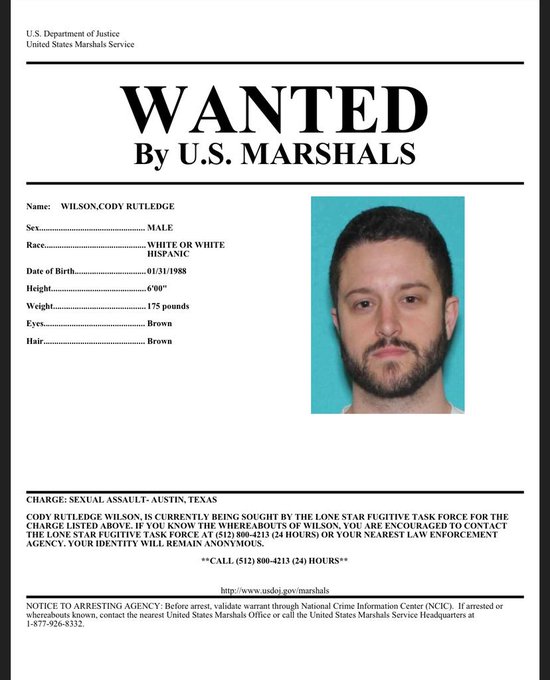Category: Cops

There are a lot of things your car can get stuck in: mud, snow, even a ditch. While every situation is different, there are some principles you can follow that may help you become unstuck without needing to call for a tow. So, we enlisted Wyatt Knox from Team O’Neil Rally School to help us put this guide together should you ever find yourself in one of these sticky situations.
Like this illustrated guide? Then you’re going to love our book The Illustrated Art of Manliness! Pick up a copy on Amazon.
Illustration by Ted Slampyak
Wilson, last seen in Thailand, is now considered a fugitive by US authorities
the Real Thunderbolt & Lightfoot
Shades of “Thunderbolt & Lightfoot”: The 20 mm Brinks Heist.
by Tom Laemlein – Wednesday, August 15, 2018

This story begins in late March 1965, when Jack Franck, an auto mechanic from New York City, purchased two Lahti 20 mm anti-tank rifles and 200 rounds of armor-piercing ammunition at the Alexandria, Va., offices of Interarmco.
He paid approximately $800 for the two massive firearms (each Lahti L-39 AT rifle weighs in at 109 pounds and is more than seven feet long).

The Lahti is a massive rifle at more than seven feet long and weighing nearly 110 pounds. Image courtesy of SA-Kuva.
Franck requested that the rifles be delivered to a Plattsburgh, N.Y., address. Plattsburgh is a small community in northern New York state, about 70 miles due south of Montreal. Interarmco employees were suspicious, and Franck’s story didn’t seem quite right, so they contacted the FBI.
After some cursory investigation, the FBI believed that Franck was attempting to smuggle the guns into Canada to help equip the “Federation du Liberation du Quebec” (FLQ), the Quebec Liberation Front.
The FLQ was a militant Marxist revolutionary group intent on establishing Quebec as an independent state by any means necessary.
The terrorist organization began operations in the early 1960s, and by the time they were eliminated in 1970, the FLQ had killed eight people and wounded several others (many during their infamous bombing of the Montreal Stock Exchange in February 1969). The FBI notified Canadian authorities about their concerns.
Waiting for the Lahti AT rifles to arrive in Plattsburgh was Joel Singer. Singer, 22, was a native of Montreal, and young man with a criminal record in Canada. Jack Franck was his uncle.
The big rifles in their crates arrived in Plattsburgh on April 5, 1965, and were held in a storage facility, awaiting pick-up. Singer apparently suspected that the firearms were being watched by the police, and made no move to claim them.
Instead, Singer waited until the weekend, and under the cover of darkness on a Sunday night, broke into the warehouse and removed the rifles his uncle had purchased. The break-in was discovered on Monday morning as employees reported to work.
Six months passed. On Oct. 23, 1965, Singer and up to five accomplices traveled from Montreal to Syracuse, N.Y. Singer’s gang had targeted the Brinks armored car facility located at near the intersection of Lodi Street and Lemoyne Avenue.
On the night of Oct. 24, Singer’s gang carried out their break-in. It was suspected that Singer’s men had a strong understanding of the layout of the building, and they carefully skirted the Brinks’ alarm systems.

The Lahti anti-tank rifle linked to the Syracuse robbery. The FBI pulled it from the waters just off the shore of Garden City, Long Island.
They managed to open the garage door and then were able to drive their DeSoto wagon, carrying the Lahti AT rifle and the rest of their burglary tools, directly into the building. The gang had modified the Lahti for their purposes.
They created a large canister-like suppressor and attached it the end of the barrel. They also used several mattresses and heavy blankets to help muffle the blast of the 20 mm cannon. Singer’s men had also developed a special mount for the AT rifle to help them blast through the foot-thick cement and steel reinforced vault wall.
Singer’s gang fired up to 33 armor-piercing rounds in a circular pattern through the vault wall, creating an approximately 18” x 24” passageway. A tight fit, but large enough for a small gang member to crawl through.
Evidence collected by police showed that the burglars brought along nitroglycerin, gas masks, welding equipment, and other heavy duty tools to force their way into the vault. The penetrating power of the Lahti did the trick and the spent 20 mm shell casings were left on the floor.
Singer’s gang gathered up almost $425,000 in cash, coins and checks, and drove away from the crime scene, amazingly unseen and unheard.
They left behind several tools though, including a number marked “Made in Canada.” Initially, police developed a multi-state search for the gang, but Canada soon became the primary search area when it was learned that an unsuccessful burglary attempt was made in Quebec earlier in the year, and a Lahti 20 mm AT rifle was found at the scene.
Within a day or two of the crime, Joel Singer visited his uncle Jack Franck in the New York City area. Franck would later testify that Singer gave him $200 for his help in acquiring the firearms, and described that he was behind the Syracuse robbery.
Shortly after Singer left, Franck contacted the FBI and asked for immunity in exchange for his testimony. Franck became the key witness for the prosecution, and described how he and Singer had dumped the Lahti anti-tank rifle into the ocean near Jones Beach on Long Island.
The gun was quickly recovered, and ballistic tests linked the weapon to the shell cases left behind at the scene of the Brinks robbery in Syracuse.
The FBI put Singer on their “Ten Most Wanted” list on Nov. 19, and by early December Singer was apprehended in Montreal, and was later extradited to Syracuse to stand trial.
On Jan. 31, 1967, after a two-month trial in Onondaga County in which his attorney attempted to portray him as a “lovable idiot,” Singer was convicted of third-degree burglary and first-degree grand larceny.
He was sentenced to serve five to 10 years in the maximum security Attica State Prison. Throughout his trial, Singer remained silent as to the identity of his accomplices.
He was the only person convicted in connection with this robbery, and only $166 worth of coins (found at Franck’s residence) was ever recovered from the stolen cash.

The Lahti AT rifle from the Syracuse robbery displayed outside the courtroom of the Onondaga County Courthouse in January 1967.
Singer was serving time in Attica when the massive prison riot broke out during September 1971. This violent incident apparently scarred Singer deeply.
He was transferred to a psychiatric facility in July 1972, and was released from custody in October. Singer returned to Montreal, but could not escape his demons. On Feb. 6, 1973 he committed suicide by taking cyanide, closing the book on a strange-but-true crime, and a bizarre application of a rare firearm.

Thunderbolt & Lightfoot
There is a significant plot point similarity between this United Artists film and the Brinks robbery in Syracuse. “Thunderbolt & Lightfoot” starred Clint Eastwood, Jeff Bridges, George Kennedy and Geoffrey Lewis, and was released in May 1974.
The film was written and directed by Michael Cimino. The main character is a bank robber called “The Thunderbolt” (played by Eastwood), known for his use of a 20 millimeter cannon to blast his way into a bank vault.
Thunderbolt is described as a Korean War veteran, credited with destroying several Communist tanks using a 20 mm anti-tank gun. That’s an unfortunate error, as the 20 mm Oerlikon gun used by Lightfoot in the film was never issued to American forces as an anti-tank gun.
Regardless, the use of the 20 mm cannon in the movie is quite similar to Singer’s concept to blast his way into the Brinks vault.
Overall the movie is well done and an enjoyable action film. The unique (and plausible) firearms tie-in is simply armor-piercing icing on the cake.
The 20 mm Lahti L-39 Anti-Tank Rifle
The L-39 was created by Finland’s famous arms designer Aimo Lahti, just in time for a handful of the new AT rifles to see service during the Soviet invasion of Finland (the “Winter War”) of November 1939-March 1940.
The semi-automatic, gas-operated Lahti AT rifle proved quite effective against the Soviet tanks deployed during the Winter War, its 20mm AP shot traveling at 2,600 FPS. When Finland committed to the “Continuation War” against the Soviet Union in the late June 1941, Soviet tanks had grown in size, armament and armored protection.
The effectiveness of the Lahti AT rifle became limited to sniping at hatches and optics, along with shots at the thinner armor on the lower side of the chassis and rear of the Soviet tanks.
The Finns continued to put the big 20mm rifle to use by using it in the counter-sniper role, often baiting Soviet marksmen into shooting at strawman targets to reveal their position, and then subjecting them to 20 mm AP shot in return fire.
The powerful 20 mm rounds were particularly effective at penetrating cover, and were often used against machine gun bunkers and hardened artillery positions.

Studio shot of the Finnish 20mm L-39 AT rifle, showing details of the combination sled-and-clawfoot bipod. Image courtesy of SA-Kuva.

The L-39 is semi-automatic, and gas operated. The 20 mm rounds feed from a 10-round magazine. Image courtesy of SA-Kuva.

The L-39 packed in its transit case. This was essentially how the firearm was sold in the USA beginning in the mid-1950s. Image courtesy of SA-Kuva.
Beginning in the mid-1950s, the Lahti AT rifles began to be advertised by American surplus arms dealers. For several years the Lahti L-39 was priced at $99 in its transit case and with a full complement of accessories.
The Lahti was originally available without restriction*, but since it is larger than .50 caliber (12.7 mm), it was labeled a “destructive device” and subject to NFA regulations by the Omnibus Crime Control and Safe Streets Act of 1968, and the Gun Control Act of 1968.
(*I was born about 30 years too late! Grumpy)

If I was living in the United States, instead of being in California. I would not think twice in slipping one of these nice & handy back up pistols into my pocket. If say I had to go out on a quick errand at night time.





Arizona -(Ammoland.com)- A firearm turn-in event is scheduled in New Jersey for 22 September 2018. The term “buyback” is an Orwellian propaganda word. The government cannot ‘buyback” something it never owned before.
These events have been fading away in most of the United States. In most of the country, private gun buyers attend these events and purchase expensive firearms at a higher price than the event offers.
This destroys the propaganda value of the event. It shows that guns are a valuable property that many law-abiding citizens find desirable and useful.
In states that have either outlawed private sales or made them very cumbersome, such as New Jersey and California, gun turn-in events still have some propaganda value. From courierpostonline.com:
Participants are permitted to turn in up to three guns each, no questions asked, and do not have to be residents of Burlington or Mercer counties. Ammunition is not accepted and firearms dealers are not allowed to participate in the buyback.
The county agencies are offering cash payments $250 for assault rifles, $150 for handguns, $100 for a rifle or shotgun, and $20 for an inoperable firearm.
The Burlington County Prosecutor’s Office and the Mercer County Prosecutor’s Office will host a regional gun buyback event on September 22, 2018 from 8am-4pm.
The organizers of the event in Burlington County have put some further restrictions on the event to preserve its propaganda value.
Notice only residents may turn in firearms, even though they will not ask for ID. In fact, they claim no questions will be asked.
They say that firearm dealers will not be allowed to participate. If they are not asking questions, how will they know who is a dealer and who is not?
They limit the number of firearms turned in to three per person.
At such an event I would be leery of claims of anonymity. New Jersey firearms laws are multitudinous and penalties are severe.
If the authorities decided to renege on the promises of “no ID” and “no questions” who is going to hold them to account? Could a person file a lawsuit for false arrest? Remember, law enforcement officers are allowed to run sting operations, and to lie to suspects in order to obtain convictions.
It will be interesting to see what is turned in at this event. It would be informative if an activist could video most of it, or at least the interesting parts.
Six circuits have ruled it is a First Amendment right to video public officials in the performance of their public duties. New Jersey is in the third circuit, which has upheld the First Amendment right to record video. Only the Eighth Circuit has ruled the public does not have a right to video public officials on public property.
It might be sad to see a classic Webley pistol (commonly bringing $500- $1,000 on the collectors market, be turned in to be destroyed for a mere $150.
There have been many collectible, historical, and lovely items turned in for destruction.
Most of the firearms turned in at these events are from people who inherited the firearms, know nothing about them, and are not interested in finding out how much they are actually worth.
It is common to see widows effectively tricked out of hundreds of dollars of value.
About Dean Weingarten:
Dean Weingarten has been a peace officer, a military officer, was on the University of Wisconsin Pistol Team for four years, and was first certified to teach firearms safety in 1973. He taught the Arizona concealed carry course for fifteen years until the goal of constitutional carry was attained. He has degrees in meteorology and mining engineering, and recently retired from the Department of Defense after a 30-year career in Army Research, Development, Testing, and Evaluation.
____________________________________ I just wish I could be there with a fistful of Fifties. As I am willing to bet that some good deals could be made there! Grumpy
A State Of Emergency Does Not Affect Gun Rights In Virginia

Virginia – -(AmmoLand.com)- With the pending hurricane warnings it is a good time to remind Virginians that their right to keep and bear arms is unchanged, even in a declared state of emergency.
After the gun confiscations that took place in Louisiana immediately after Hurricane Katrina, Virginia Citizens Defense League pushed for protections in Virginia law against such a thing happening here.
The following year those protections were signed into law. In Virginia, a state of emergency has no effect on our right to keep and bear arms, unless you are in a government-run shelter:
https://law.lis.virginia.gov/vacode/title44/chapter3.2/section44-146.15/
§ 44-146.15. Construction of chapter.
Nothing in this chapter is to be construed to:
…
(3) Empower the Governor, any political subdivision, or any other governmental authority to in any way limit or prohibit the rights of the people to keep and bear arms as guaranteed by Article I, Section 13 of the Constitution of Virginia or the Second Amendment of the Constitution of the United States, including the otherwise lawful possession, carrying, transportation, sale, or transfer of firearms except to the extent necessary to ensure public safety in any place or facility designated or used by the Governor, any political subdivision of the Commonwealth, or any other governmental entity as an emergency shelter or for the purpose of sheltering persons;
 About Virginia Citizens Defense League, Inc. (VCDL):
About Virginia Citizens Defense League, Inc. (VCDL):
Virginia Citizens Defense League, Inc. (VCDL). VCDL is an all-volunteer, non-partisan grassroots organization dedicated to defending the human rights of all Virginians. The Right to Keep and Bear Arms is a fundamental human right.
For more information, visit: www.vcdl.org.
The next time some whining liberal tells you that capital punishment doesn’t prevent murder, feel free to quote this article (once you have done kicking them in the balls, that is):
In March, two men were convicted in Newcastle Crown Court of the murder of a 29-year-old mother of two, Quyen Ngoc Nguyen. In a pre-meditated crime of unimaginable depravity, Stephen Unwin and William McFall robbed, raped and bludgeoned this 5ft-tall nail bar manager.
They dumped her — possibly still alive — in her own car, which they then set alight. They posed for ghoulish selfies at the scene.
Both men were already convicted killers, released as a result of parole board hearings.
McFall, now 51, had been freed after serving 13 years for battering to death with a hammer an 86-year-old woman whose home he had burgled.
Unwin, ten years younger, had been released after serving 14 years of a ‘life sentence’ for stabbing to death a 73-year-old retired pharmacist in the course of a burglary — on Christmas Day, 1998. Unwin had sought to cover up his tracks by setting fire to his victim’s bungalow.
There is no parole board on earth which can know if someone is truly remorseful (pictured: Nick Hardwick, former Parole Board chair) +6
There is no parole board on earth which can know if someone is truly remorseful (pictured: Nick Hardwick, former Parole Board chair)
He was released in 2012, because the parole board had believed his claim to feel ‘deep remorse’.
Yeah, he was remorseful, all right. It bears no reminding that had these two bastards (and the others in the article) been executed, their subsequent victims would still be alive. Prevention at its finest.
Frankly, I think that the parole boards who freed these animals should also face the needle / chair / gallows. This was a basic precept of Hammurabic Law, and I for one regret its passing, in this respect at least.
Remember too that our Liberal Class want us to be more like Europe or Britain, and the modern-day “democratic socialists” have included the abolition of the prison system in their election manifesto.
Communistatis delenda est.
***From Splendid Isolation
John Whitehead’s Commentary
Battlefield America: The Ongoing War on the American People

“A government which will turn its tanks upon its people, for any reason, is a government with a taste of blood and a thirst for power and must either be smartly rebuked, or blindly obeyed in deadly fear.”—John Salter
Police in a small Georgia town tasered a 5-foot-2, 87-year-old woman who was using a kitchen knife to cut dandelions for use in a recipe. Police claim they had no choice but to taser the old woman, who does not speak English but was smiling at police to indicate she was friendly, because she failed to comply with orders to put down the knife.
Police in California are being sued for using excessive force against a deaf 76-year-old woman who was allegedly jaywalking and failed to halt when police yelled at her. According to the lawsuit, police searched the woman and her grocery bags. She was then slammed to the ground, had a foot or knee placed behind her neck or back, handcuffed, arrested and cited for jaywalking and resisting arrest.
In Alabama, police first tasered then shot and killed an unarmed man who refused to show his driver’s license after attempting to turn in a stray dog he’d found to the local dog shelter. The man’s girlfriend and their three children, all under the age of 10, witnessed the shooting.
In New York, Customs and Border Protection officers have come under fire for subjecting female travelers (including minors) to random body searches that include strip searches while menstruating, genital probing, and forced pelvic exams, X-rays and intravenous drugs at area hospitals.
At a California gas station, ICE agents surrounded a man who was taking his pregnant wife to the hospital to deliver their baby, demanding that he show identification. Having forgotten his documents at home in the rush to get to the hospital, the husband offered to go get them. Refusing to allow him to do so, ICE agents handcuffed and arrested the man for not having an ID with him, leaving his wife to find her way alone to the hospital. The father of five, including the newborn, has lived and worked in the U.S. for 12 years with his wife.
These are not isolated incidents.
These cases are legion.
This is what a state of undeclared martial law looks like, when you can be arrested, tasered, shot, brutalized and in some cases killed merely for not complying with a government agent’s order or not complying fast enough.
This isn’t just happening in crime-ridden inner cities.
It’s happening all across the country.
America has been locked down.
This is what it’s like to be a citizen of the American police state.
This is what it’s like to be an enemy combatant in your own country.
This is what it feels like to be a conquered people.
This is what it feels like to be an occupied nation.
This is what it feels like to live in fear of armed men crashing through your door in the middle of the night, or to be accused of doing something you never even knew was a crime, or to be watched all the time, your movements tracked, your motives questioned.
This is what it feels like to have your homeland transformed into a battlefield.
Mind you, in a war zone, there are no police—only soldiers. Thus, there is no more Posse Comitatus prohibiting the government from using the military in a law enforcement capacity. Not when the local police have, for all intents and purposes, already become the military.
In a war zone, the soldiers shoot to kill, as American police have now been trained to do. Whether the perceived “threat” is armed or unarmed no longer matters when police are authorized to shoot first and ask questions later.
In a war zone, even the youngest members of the community learn at an early age to accept and fear the soldier in their midst. Thanks to funding from the government, more schools are hiring armed police officers—some equipped with semi-automatic AR-15 rifles—to “secure” their campuses.
In a war zone, you have no rights. When you are staring down the end of a police rifle, there can be no free speech. When you’re being held at bay by a militarized, weaponized mine-resistant tank, there can be no freedom of assembly. When you’re being surveilled with thermal imaging devices, facial recognition software and full-body scanners and the like, there can be no privacy. When you’re charged with disorderly conduct simply for daring to question or photograph or document the injustices you see, with the blessing of the courts no less, there can be no freedom to petition the government for a redress of grievances.
And when you’re a prisoner in your own town, unable to move freely, kept off the streets, issued a curfew at night, there can be no mistaking the prison walls closing in.
This is happening and will happen anywhere and everywhere else in this country where law enforcement officials are given carte blanche to do what they like, when they like, how they like, with immunity from their superiors, the legislatures, and the courts.
You see, what Americans have failed to comprehend, living as they do in a TV-induced, drug-like haze of fabricated realities, narcissistic denial, and partisan politics, is that we’ve not only brought the military equipment used in Iraq and Afghanistan home to be used against the American people.
We’ve also brought the very spirit of the war home.
“We the people” have now come full circle, from being held captive by the British police state to being held captive by the American police state.
In between, we have charted a course from revolutionaries fighting for our independence and a free people establishing a new nation to pioneers and explorers, braving the wilderness and expanding into new territories.
Where we went wrong, however, was in allowing ourselves to become enthralled with and then held hostage by a military empire in bondage to a corporate state (the very definition of fascism).
No longer does America hold the moral high ground as a champion of freedom and human rights. Instead, in the pursuit of profit, our overlords have transformed the American landscape into a battlefield, complete with military personnel, tactics and weaponry.
To our dismay, we now find ourselves scrambling for a foothold as our once rock-solid constitutional foundation crumbles beneath us. And no longer can we rely on the president, Congress, the courts, or the police to protect us from wrongdoing.
Indeed, the president, Congress, the courts, and the police have come to embody all that is wrong with America.
For instance, how does a man who is relatively healthy when taken into custody by police lapse into a coma and die while under their supervision?
What kind of twisted logic allows a police officer to use a police car to run down an American citizen and justifies it in the name of permissible deadly force?
And what country are we living in where the police can beat, shoot, choke, taser and tackle American citizens, all with the protection of the courts?
Certainly, the Constitution’s safeguards against police abuse means nothing when government agents can crash through your door, terrorize your children, shoot your dogs, and jail you on any number of trumped of charges, and you have little say in the matter. For instance, San Diego police, responding to a domestic disturbance call on a Sunday morning, showed up at the wrong address, only to shoot the homeowner’s 6-year-old service dog in the head.
Rubbing salt in the wound, it’s often the unlucky victim of excessive police force who ends up being charged with wrongdoing. Although 16-year-old Thai Gurule was charged with resisting arrest and strangling and assaulting police officers, a circuit judge found that it was actually the three officers who unlawfully stopped, tackled, punched, kneed, tasered and yanked his hair who were at fault. Thankfully, bystander cell phone videos undermined police accounts, which were described as “works of fiction.”
Not even our children are being spared the blowback from a growing police presence.
As one juvenile court judge noted in testimony to Congress, although having police on public school campuses did not make the schools any safer, it did result in large numbers of students being arrested for misdemeanors such as school fights and disorderly conduct. One 11-year-old autistic Virginia student was charged with disorderly conduct and felony assault after kicking a trashcan and resisting a police officer’s attempt to handcuff him. A 14-year-old student was tasered by police, suspended and charged with disorderly conduct, resisting arrest and trespassing after he failed to obey a teacher’s order to be the last student to exit the classroom.
There is no end to the government’s unmitigated gall in riding roughshod over the rights of the citizenry, whether in matters of excessive police powers, militarized police, domestic training drills, SWAT team raids, surveillance, property rights, overcriminalization, roadside strip searches, profit-driven fines and prison sentences, etc.
The president can now direct the military to detain, arrest and secretly execute American citizens. These are the powers of an imperial dictator, not an elected official bound by the rule of law. This mantle is worn by whomever occupies the Oval Office now and in the future.
A representative government means nothing when the average citizen has little to no access to their elected officials, while corporate lobbyists enjoy a revolving door relationship with everyone from the President on down. Indeed, while members of Congress hardly work for the taxpayer, they work hard at being wooed by corporations, which spend more to lobby our elected representatives than we spend on their collective salaries. For that matter, getting elected is no longer the high point it used to be. As one congressman noted, for many elected officials, “Congress is no longer a destination but a journey… [to a] more lucrative job as a K Street lobbyist… It’s become routine to see members of Congress drop their seat in Congress like a hot rock when a particularly lush vacancy opens up.”
As for the courts, they have long since ceased being courts of justice. Instead, they have become courts of order, largely marching in lockstep with the government’s dictates, all the while helping to increase the largesse of government coffers. It’s called for-profit justice, and it runs the gamut of all manner of financial incentives in which the courts become cash cows for communities looking to make an extra buck. As journalist Chris Albin-Lackey details, “They deploy a crushing array of fines, court costs, and other fees to harvest revenues from minor offenders that these communities cannot or do not want to raise through taxation.” In this way, says Albin-Lackey, “A resident of Montgomery, Alabama who commits a simple noise violation faces only a $20 fine—but also awhopping $257 in court costs and user fees should they seek to have their day in court.”
As for the rest—the schools, the churches, private businesses, service providers, nonprofits and your fellow citizens—many are also marching in lockstep with the police state.
This is what is commonly referred to as community policing.
After all, the police can’t be everywhere. So how do you police a nation when your population outnumbers your army of soldiers? How do you carry out surveillance on a nation when there aren’t enough cameras, let alone viewers, to monitor every square inch of the country 24/7? How do you not only track but analyze the transactions, interactions and movements of every person within the United States?
The answer is simpler than it seems: You persuade the citizenry to be your eyes and ears.
It’s a brilliant ploy, with the added bonus that while the citizenry remains focused on and distrustful of each other, they’re incapable of focusing on more definable threats that fall closer to home—namely, the government and its militarized police.
In this way, we’re seeing a rise in the incidence of Americans being reported for growing vegetables in their front yard, keeping chickens in their back yard, letting their kids walk to the playground alone, and voicing anti-government sentiments. For example, after Shona Banda’s son defended the use of medical marijuana during a presentation at school, school officials alerted the police and social services, and the 11-year-old was interrogated, taken into custody by social workers, had his home raided by police and his mother arrested.
Now it may be that we have nothing to worry about.
Perhaps the government really does have our best interests at heart.
Perhaps covert domestic military training drills really are just benign exercises to make sure our military is prepared for any contingency.
Then again, while I don’t believe in worrying over nothing, it’s safe to say that the government has not exactly shown itself to be friendly in recent years, nor have its agents shown themselves to be cognizant of the fact that they are civilians who answer to the citizenry, rather than the other way around.
As Aldous Huxley warned in Brave New World Revisited, “Liberty cannot flourish in a country that is permanently on a war footing, or even a near-war footing. Permanent crisis justifies permanent control of everybody and everything by the agencies of the central government.”
Whether or not the government plans to impose some more overt form of martial law in the future remains to be seen, but there can be no denying that we’re being accustomed to life in a military state.
The malls may be open for business, the baseball stadiums may be packed, and the news anchors may be twittering nonsense about the latest celebrity foofa, but those are just distractions from what is really taking place: the transformation of America into a war zone.
As I document in my book Battlefield America: The War on the American People, if it looks like a battlefield (armored tanks on the streets, militarized police in metro stations, surveillance cameras everywhere), sounds like a battlefield (SWAT team raids nightly, sound cannons to break up large assemblies of citizens), and acts like a battlefield (police shooting first and asking questions later, intimidation tactics, and involuntary detentions), it’s a battlefield.
Indeed, what happened in Ocala, Florida, is a good metaphor for what’s happening across the country: Sheriff’s deputies, dressed in special ops uniforms and riding in an armored tank on a public road, pulled a 23-year-old man over and issued a warning violation to him after he gave them the finger. The man, Lucas Jewell, defended his actions as a free speech expression of his distaste for militarized police.
Translation: “We the people” are being hijacked on the highway by government agents with little knowledge of or regard for the Constitution, who are hyped up on the power of their badge, outfitted for war, eager for combat, and taking a joy ride—on taxpayer time and money—in a military tank that has no business being on American soil.
Rest assured, unless we slam on the brakes, this runaway tank will soon be charting a new course through terrain that bears no resemblance to land of our forefathers, where freedom meant more than just the freedom to exist and consume what the corporate powers dish out.
Rod Serling, one of my longtime heroes and the creator of The Twilight Zone, understood all too well the danger of turning a blind eye to evil in our midst, the “things that scream for a response.” As Serling warned, “if we don’t listen to that scream – and if we don’t respond to it – we may well wind up sitting amidst our own rubble, looking for the truck that hit us – or the bomb that pulverized us. Get the license number of whatever it was that destroyed the dream. And I think we will find that the vehicle was registered in our own name.”
If you haven’t managed to read the writing on the wall yet, the war has begun.

Gary Black faithfully served his country in Vietnam, and he died protecting his family earlier this summer. (Photo: CBS Denver)
A Vietnam War veteran and Bronze Star and Purple Heart recipient was laid to rest this weekend after being shot by police defending his grandson from a home intruder.
Richard “Gary” Black, 73, was in his Aurora, Colorado, home around 1:30 a.m. last month when a naked man broke down their front door and began assaulting his grandson. Black shot the intruder, but police shot Black when they arrived at the scene and saw him carrying a handgun and a flashlight.
The incident has been described as one of the most tragic police shootings in the city’s history, according to the Denver Post, and those who were there hailed him as a hero both in the service and at home.
“He was a hero coming out of that war, and he died a hero defending his family,” said Mark Potter, chaplain for American Legion Post 22 in Northglenn, Colorado.
Aurora Police Department Chief Nick Metz, whose officer shot and killed Black, was also in attendance, accompanied by several uniformed officers. Metz hailed Black as a hero for defending his family.
“There’s no doubt in my mind in any shape or form that Mr. Black saved his family’s life that night,” Metz said.
SEE ALSO: Police at Texas Tech Praise Campus Carry: ‘No Longer a Target of Opportunity’ for Mass Killers
The incident began when 26-year-old Dajon Harper left a nearby party and, for reasons that remain unclear, broke down Black’s door and grabbed Black’s grandson, who had been sleeping on the couch, according to the Denver Post. Harper took Black’s grandson to the bathroom and tried to drown him, while Black and the boy’s father attempted to wrestle the boy away.
“I won’t go into the graphic details other than to say the child was violently assaulted,” Metz said.
Black was hit in the head with a vase during the course of the fight, and neither man was able to pull Harper off the boy. Black retrieved a 9mm handgun and shot Harper, but by that time other people from the party had arrived at the house.
Metz told reporters earlier this month that his officers arrived to a “violent” and “chaotic” scene, and it isn’t clear from 911 and dispatch calls whether they had been given a clear description of the intruder or the other individuals at the house.
“The 911 telephone call by Mrs. Black was difficult to understand as large portions are unintelligible,” the Black family said in a statement. “The family acknowledges the APD’s position that the responding officers did not receive a description of the intruders.”
SEE ALSO: WATCH: Suspects, Police Exchange Over 60 Rounds in Insane Shootout
Officers observed Black walk around a corner, turn back, and come towards them. Metz says his officers told Black multiple times to drop his weapon, but he also admitted that Black had suffered hearing impairment during his time in the Army.
“For the next 13 seconds, officers continued to give at least five commands to Mr. Black to drop the gun and to show his hands,” Metz said. “We don’t know why, but for whatever reason Mr. Black did not drop the gun.”
Metz admitted that the officers did not identify themselves before firing, but has continued to defend his officers’ actions, even allowing the officers who shot Black to return to work this week.
“There was a reference that our officers acted recklessly,” Metz said. “I dispute that strongly. They were not reckless. They responded how I would expect them to respond given the limited amount of information they were given.”
Gary Black’s wife, Jeanette Black, invited the Aurora police to her husband’s funeral because she wanted her children and grandchildren to respect law enforcement despite what happened.
“They’re still here to protect all of us,” she said. “They’re still representatives of our city.”

/cdn.vox-cdn.com/uploads/chorus_image/image/61463757/TNR_STILL_06.0.png)

